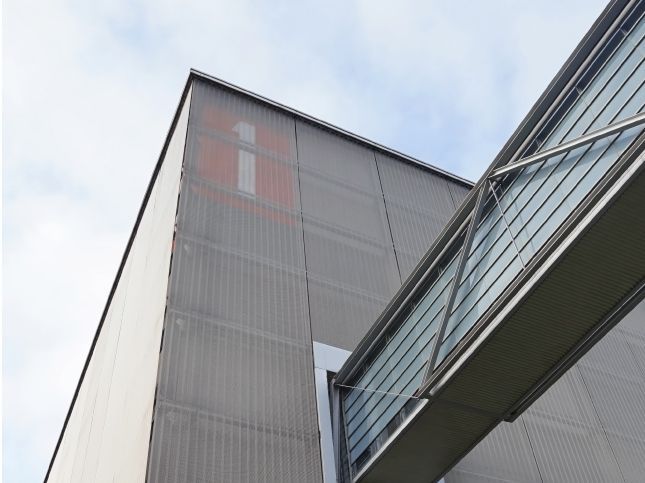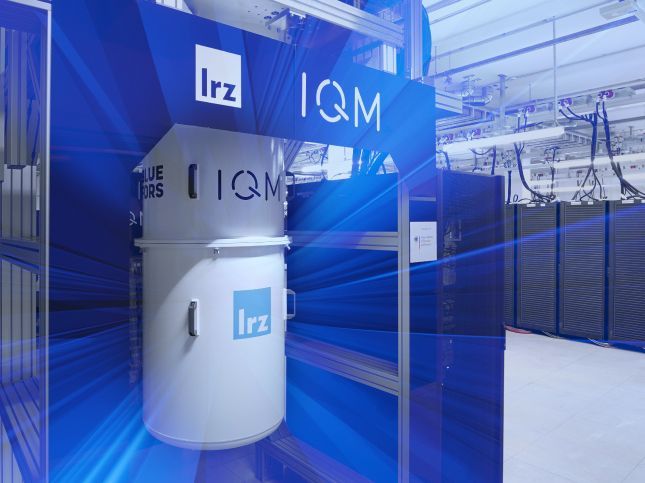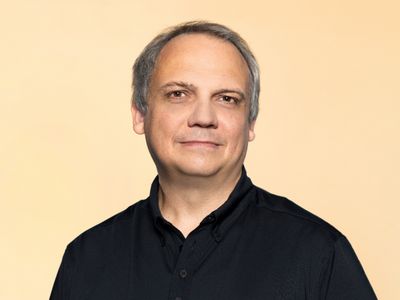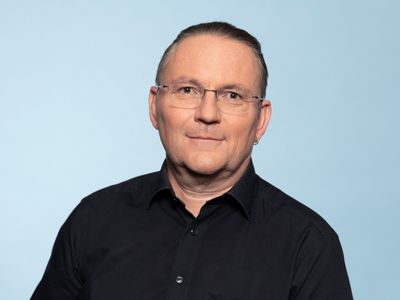


For more than 60 years, the Leibniz Supercomputing Centre (LRZ) has stood for reliable IT infrastructures and services for the digitalisation of science, research and teaching. More than 300 IT specialists and researchers develop and maintain innovative technologies and tools in Garching, and not least to run the computing centre sustainably.
Founded in 1962 as an Institute of the Bavarian Academy of Sciences and Humanities (BAdW), the LRZ develops and installs the prerequisites for computer-aided state-of-the-art research as well as flexible and agile working in science. In addition to computers, servers and the Munich Scientific Network (MWN), it provides cloud services, online access to high-performance computing as well as software and tools for processing, analysing and storing research data and information. The LRZ helps its users around the clock with technical questions; it also runs an extensive course and training programme and advises institutes on how to set up IT technology or optimise existing technology.
The LRZ is one of the high-performance computing centres of the Gauss Centre for Supercomputing (GCS) and is valued worldwide for its experience and research. In the area of future computing, it explores the benefits of innovative IT components for users, while the Centre for Virtual Reality and Visualisation develops tools which create fascinating images from research results. And the Quantum Integration Centre (QIC) explores future technologies and combines them with supercomputers. We always bear one thing in mind when it comes to all these tasks: Running IT efficiently and sustainably.
Computers, networks, servers, and cloud services – here you will find descriptions of LRZ services at a glance, as well as instructions for using technology and services.
“It is unworthy of excellent men to lose hours in the labour of calculation”, said our namesake, the polymath Gottfried Wilhelm Leibniz, explaining his commitment to calculating machines. We support science and research in our capacity as a service provider and digitalisation partner. Our vision is to provide researchers with reliable, technical computer resources and tools so that they can gain insights more quickly and sustainably: In this way, we are playing our part in solving current social challenges.

Our services are reliable, secure and trustworthy; our processes are efficient and transparent for customers. This s the verdict of our external auditors, who have been auditing the LRZ in accordance with the standards of the International Organisation for Standardisation (ISO) and providing us with certification for effective IT service management (ISO/IEC 20000) and comprehensive information security (ISO/IEC 27001). Security, and in particular the confidentiality, integrity and availability of sensitive data is a top priority for us at the LRZ. We also guarantee now and in the future that our services and IT support will run reliably according to defined processes.

The energy-efficient operation of our computing centre has always been something close to our hearts. Since 2024, we have been working on the introduction of an environmental management system – or EMAS for short – in accordance with ISO 14001 as a means of introducing policies on the careful use of natural resources by all our teams and departments and to anchor our sustainability efforts more firmly. This will see employees reviewing their working methods to reduce energy consumption of the use of consumables; teams and departments checking processes for the potential to save raw materials, water or energy or reduce waste generation.

Supercomputers, systems for artificial intelligence, quantum computers: We are constantly exploring the most innovative hardware and software as well as the needs of our users so that researchers in all disciplines can pursue projects with appropriate resources at their disposal. We draw on our experience to build necessary IT infrastructures, develop and optimise reliable IT services for science, research and teaching. Our aim is to provide users with secure and energy-efficient technology, which they can scale or flexibly tailor to suit their own needs. We also support and train scientists and researchers in the use of innovative technologies: In this way, we are playing our part in ensuring that research efficiently produces usable results.

We cannot assume to know everything: The LRZ is a learning, open, transparent organisation that relies on partnership and cooperation. We rely on the diversity of our working groups and departments, as well as on the knowledge of the scientific Advisory Board and the Council of Experts to assess challenges from a wide range of perspectives and find the best, practical solutions to them. We are working with researchers and technology providers to constantly develop information technologies and supercomputing. We work with universities and research institutes to improve IT services and system security.

As an Institute of the Bavarian Academy of Science and Humanities (BAdW) and in its capacity as a digitalisation partner for universities and research institutes, the LRZ is very well connected to science and potential users: Therefore, the pivotal point in the organisation of the LRZ is the Advisory Board, which is currently made up of 30 professors and is appointed by the Bavarian Academy of Sciences and Humanities and Bavarian universities. The Board of Directors consists of four members who are elected from this committee, who, in turn, determine how the LRZ is managed.
The LRZ’s leadership team is supported by four staff units that take care of service management, IT security and data protection. Below these are the five departments responsible for the activities, services and technical resources at the LRZ. As an interdisciplinary cross-sectional unit, the research team is based at the LRZ, which is divided into the seven subject areas of Environment Computing, Research Data Management, Visualisation, IT Management and Security, Big Data and Artificial Intelligence, Trusted Research Environments, Future Computing and Energy Efficiency as well as Research and Information Management.
To the rules of procedure

Chair of the Board of Directors and Head of the LRZ

TUM School of Computation, Information and Technology and Director of the LRZ

TUM School of Computation, Information and Technology and Director of the LRZ

Professorial Chair of Database Systems and Data Mining, LMU, and LRZ Director

Deputy Head of the LRZ
The LRZ was founded in 1962 under the umbrella of the Bavarian Academy of Science and Humanities (BAdW). This foresighted decision by the founding fathers gave the computing centre independence and was a prerequisite for its growth and internationalisation. Thanks to the Bavarian Academy of Science and Humanities, the LRZ is integrated into a valuable network of world-class scientists, who, with their demands and ideas, advance the institute and its activities. Following in the footsteps of the Bavarian Academy of Science and Humanities, the LRZ is also dedicated to conducting basic research and qualifying the next generation of scientists.
The LRZ has commissioned its next high-performance computer. Blue Lion is set to start computing for research and science by 2027 and will be able to run artificial intelligence methods in addition to classic HPC workloads. The supercomputer is not just equipped with Central Processing Units (CPU) for this purpose, but also Graphics Processing Units (GPU). These not only enable statistical data analyses to be carried out but also accelerate scientific calculations and simulations. Like the GPU, quantum processors will also accelerate high-performance computing – and add many more new computing methods to the mix.
The LRZ is taking quantum computing out of physics labs and opening its Quantum Integration Centre (QIC). The LRZ is planning to connect innovative quantum processors with its supercomputers in collaboration with partners from Munich Quantum Valley to allow scientists to incorporate this future tech into their everyday work as quickly as possible. The LRZ will be the world’s first computing centre to achieve this goal in summer 2024 with a quantum system based on superconducting circuits. Other quantum technologies, such as those that work with laser light and ionisation, are already in the process of being tested and can be used by researchers.
Moore’s law, which asserts that computing power doubles within a few years as a result of technical progress, is gradually reaching its limits. Accelerators and new processor architectures are being developed – and the LRZ is setting up its own test field to experiment with them. The Bavarian Energy, Architecture and Software Tetbed, or BEAST for short, supports the design and planning of the next high-performance systems at the LRZ and helps to develop strategies for increasing energy efficiency.
In July 2021, the LRZ continued to grow and site extensions were inaugurated: Space at the ‘computer cube’ was roughly doubled for the next generation of supercomputers; and the LRZ now needs other offices and course rooms. The supercomputers are now built in two phases: This reflects the dynamics of technological development, particularly the increase in energy consumption. After four to five years, a similarly powerful system – with newer, more economical technology – will be installed. And while Phase 1 of SuperMUC-NG from Lenovo arrives at the LRZ, the first part of SuperMUC is dismantled again.
In addition to offices, the extension also houses the Centre for Virtual Reality and Visualisation (V2C), which was completed in 2014.
After the Linux cluster, the servers also moved to Garching in April 2006. Fun fact: The fastest method of transferring 1.5 petabytes of data to the new computing centre involved transporting all tapes by lorry. This achieved a transfer rate of 7 terabits per second – something that even current networks cannot (yet) achieve. The HLRB II went live in autumn 2006.
DGrid computing has been spreading since the turn of the millennium and the LRZ is involved in relevant projects, networking first with regional and national computing centres and then with institutes from all over the world. Since then, the LRZ has been researching the most elementary components of matter in the global grid system of high-energy physicists.
The LRZ’s refurbishment was completed by 1997. At the time, plans were also underway for the first high-performance computer for Bavaria, HLRB, which was installed in March 2000: The Hitachi SR8000-F1 system managed around one teraFLOP or around a billion floating point calculations per second. 8 systems were installed to perform long serial computing tasks as early as 1999, and these are gradually being expanded into a cluster of hundreds of PC with partitions for different requirements (32 and 64 Bit, serial and parallel programmes, shared memory modes). The decision for the next supercomputer also means planning a new computing centre on the existing research campus in Garching.
The volume of data stored at the LRZ grew from one terabyte (TB) to 217 terabytes between 1996 and 2002, and to one petabyte by 2007. This required new services for short-term data backups and long-term archiving, for which new hardware and software are constantly being developed. Usage data migrated from reel-to-reel tapes to the first robot-operated VHS cassette system. Additional storage capacities boosted our relationship with the Bayerischen Staatsbibliothek and the Bibliotheksverbund Bayern. Because data is valuable, the LRZ’s entire database has been housed at a second computing centre since 2012 for security reasons and the Staatsbibliothek has maintained its own 700 TB storage facility at the LRZ since the same year.
The demand for computing power is constantly increasing, not just in Munich but across Bavaria. This demand was satisfied by the gradual installation of a Cray Y-MP4/432 high-performance computer with four processors and, most recently, 512 megabytes of main memory. But even this system was on the verge of reaching its limits. At the same time, LRZ discovered that it had an asbestos problem – and the computing centre’s operations had to be relocated to containers, and a new building and other high-performance systems planned.
The remote data processing network, which connects devices like punch card readers, printers and plotters to the LRZ’s central computers, grew with the first high-performance computers. But, the first communication network, the computer, was created in the 1980s, connecting computers and later mobile devices, scanning microscopes, measuring and test strands as well as other laboratory equipment. The Munich Science Network was gradually created when fibre optic connections were installed between the Munich universities and a city-wide backbone network with routers was established. This was connected to the German Research Network in 1990 and then to the Internet in 1991. Not only did the transmission speeds grow in the years to come, but the networking of research institutes too.
The first central computer system, consisting of two computers from Control Data, a remote processing network from AEG-Telefunken, 11 stacking station with punch card readers, punch tape readers and high-speed printers, 200 text viewers, 5 graphic viewers and 10 serial printers, went into operation.
The “Akademie-Rechenzentrum” started life in Munich’s Richard-Wagnerstraße where it ran a TR4 system supplied by Telefunken; the ALGOL compiler and the operating system were developed at the computing centre, which outgrew its space and was renamed the ‘Leibniz-Rechenzentrum’ in 1966. It moved to Barer Straße in 1970, where a TR440 system was installed alongside the TR4, followed by the TR86S satellite computer in 1971.
Under the umbrella of the Bavarian Academy of Science and Humanities, the TUM professors Hans Piloty and Robert Sauer founded the “Commission for Electronic Computing”, which, with funding from the Free State of Bavaria, decides to set up a computing centre for Munich’s universities and scientific community and conduct research into computer science.
If you need computing power for research projects or are looking to speak to someone about innovative technologies, then look no further! We are happy to provide you with advice and assistance and put you in touch with our experts. This is how you can reach us
